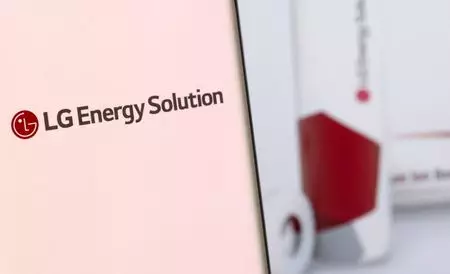The energy landscape is undergoing a transformative shift, as highlighted by UBS’s ambitious projections regarding energy storage growth. According to their analysis, the global energy storage capacity, presently estimated at 270 gigawatts (GW), is poised for an unprecedented expansion to over 9,000 GW by 2050. Such an increase is not merely a statistical projection; it embodies a crucial response to the evolving energy mix, which is expected to be substantially shaped by renewable sources like solar and wind.
Renewable Energy Dynamics and Storage Needs
A significant takeaway from UBS’s findings is the anticipated eightfold rise in energy storage capacity by the year 2030, reaching beyond 2,000 GW. The rationale behind this surge rests on the inherent intermittency of renewable energy sources. As countries strive to incorporate higher levels of renewables into their energy portfolios, they encounter challenges in providing a steady energy supply. Consequently, effective energy storage solutions emerge as an essential pillar to balance supply and demand, ensuring energy security even during fluctuations in generation.
Moreover, the International Energy Agency (IEA) reinforces UBS’s outlook with a revised forecast that notes a striking increase in renewable capacity by 2050. For instance, projections indicate a 30% boost in solar energy generation compared to earlier estimates from 2023, coupled with a staggering elevenfold increase from 2015 figures. The relationship between escalating renewable deployment and energy storage requirements cannot be overstated; as renewable energy becomes more prevalent, storage solutions become indispensable.
UBS suggests that energy storage systems may need to comprise a significant proportion of total renewable capacity, projecting that this ratio could rise to 20% in the coming years. This projection is further supported by previous forecasts from UBS’s China Utilities team, seen as a precursor to global trends, which highlighted a shift in storage contribution from 10% in 2020 to an estimated 20-30% by 2030. The implications of these shifts extend beyond mere numbers; they signal a fundamental change in the strategy for integrating renewables into the energy grid, creating a more adaptive and resilient system.
UBS elaborates on various emerging energy storage technologies that hold promise for future development. The traditional dominant player has been pumped hydroelectric energy storage, yet this technology faces geographic and environmental constraints limiting its expansion potential. In contrast, battery storage systems are projected to witness robust growth, buoyed by innovations in the electric vehicle (EV) sector, which have catalyzed both technological advancements and significant cost reductions.
Battery systems stand out due to their modular design, taking shapes that range from residential units to large utility-scale systems. This versatility allows for greater deployment flexibility, addressing localized energy storage needs efficiently. However, UBS also raises pertinent concerns regarding the sustainability and practicality of these batteries, emphasizing the potential disruptions from nascent technologies.
As the demand for energy storage surges, there lies an inherent complexity within the technology itself. The reliance on critical raw materials—many of which are sourced from geopolitically unstable regions—introduces significant risks. Moreover, production logistics can pose challenges, particularly in terms of water usage and waste management. Yet, beyond these supply chain concerns, the longevity and economic viability of current storage solutions, particularly those with less than four hours of capacity, keeps analysts vigilant.
In light of these challenges, UBS suggests that alternative storage technologies could potentially break out as disruptors. Concepts such as gravitational energy storage, compressed air systems, and various battery innovations—ranging from sodium-ion to flow batteries—may play crucial roles as the energy sector seeks sustainable solutions.
The future of energy storage is indeed pivotal as it forms the backbone of a more renewable-dominated energy landscape. With ambitious targets set for 2030 and 2050, we find ourselves at the crux of an energy evolution that necessitates not just investment and innovation, but also a comprehensive understanding of the underlying systems that will facilitate this growth. In navigating the complexities of energy storage, the industry holds the potential not only to reshape how we power our world but to safeguard our energy future amidst the rising tide of renewables.

